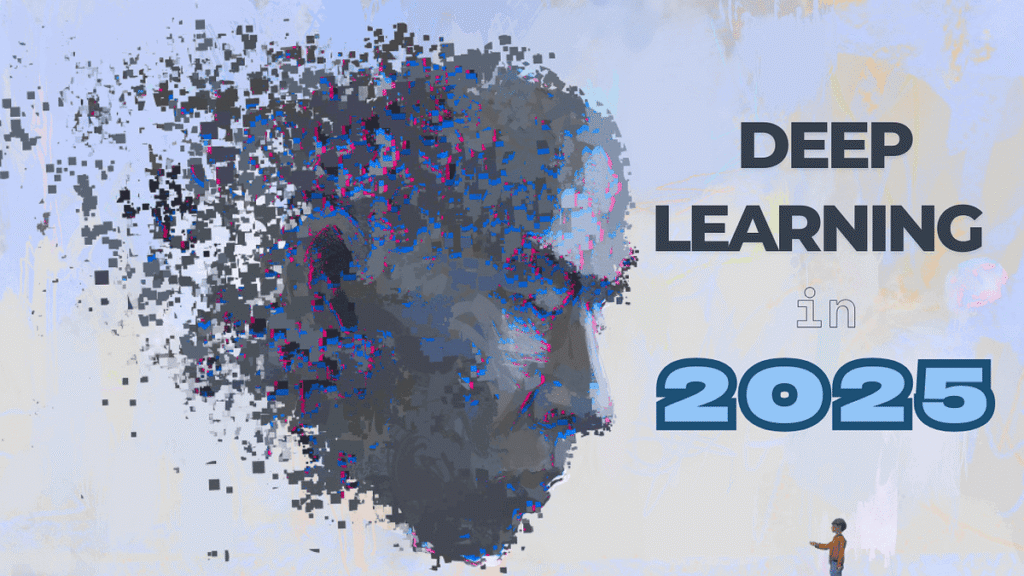If you’ve ever wondered about Machine Learning vs Deep Learning—what’s the difference?, you’re not alone. These two buzzwords dominate conversations in tech, AI, and data science—but they’re not the same. Understanding the distinction is essential whether you’re a student, developer, business leader, or curious learner.
This simplified guide will break it all down—no jargon, no confusion—just clear explanations, examples, and insights into which one you should use and when.
Introduction to AI, Machine Learning, and Deep Learning
Artificial Intelligence (AI) is the broad science of mimicking human intelligence. Within AI, we find:
- Machine Learning (ML): A subfield of AI where systems learn from data.
- Deep Learning (DL): A subfield of ML using layered neural networks to analyze data.
Think of AI as the umbrella, ML as a powerful tool under that umbrella, and DL as the most advanced form of ML
What is Machine Learning (ML)?
Machine Learning refers to algorithms that learn patterns from data and make predictions or decisions without being explicitly programmed.
Three Main Types:
- Supervised Learning: Learns from labeled data (e.g., spam vs. non-spam emails)
- Unsupervised Learning: Finds hidden patterns in unlabeled data (e.g., customer segmentation)
- Reinforcement Learning: Learns through trial and error using rewards and penalties (e.g., game bots)
What is Deep Learning (DL)?
Deep Learning is a specialized type of ML that uses artificial neural networks—inspired by the human brain—to solve complex problems.
These models include dozens or even hundreds of hidden layers, allowing them to automatically learn features from data like images, sound, or text—without manual intervention.
Key Differences Between Machine Learning and Deep Learning
| Aspect | Machine Learning | Deep Learning |
|---|---|---|
| Feature Engineering | Requires manual feature selection | Learns features automatically |
| Data Requirements | Works with smaller datasets | Needs large amounts of labeled data |
| Model Complexity | Simple to moderately complex | Highly complex (multi-layered) |
| Hardware Requirement | Can run on standard CPU | Requires GPUs for training |
| Training Time | Shorter | Longer |
| Interpretability | More explainable | Often a “black box” |
Data Dependency and Processing Requirements
Machine learning models can work with relatively small datasets, but deep learning thrives on big data. For instance, training a deep learning model to recognize faces might require millions of images and high-end GPUs or TPUs.
Training Time and Model Performance
ML models typically train faster and require fewer resources. However, deep learning often delivers higher accuracy in tasks like image classification or language translation—at the cost of longer training and inference time.
Explainability and Interpretability
Machine learning models like decision trees or linear regression are easier to explain and audit. In contrast, deep learning models—especially neural networks—are often called “black boxes” because it’s harder to understand how they reach conclusions.
Popular Algorithms in Machine Learning
- Linear Regression: Predicts continuous values
- Decision Trees: For classification and regression
- Support Vector Machines (SVM): Separates data with clear margins
- K-Nearest Neighbors (KNN): Predicts based on similarity to neighbors
Popular Architectures in Deep Learning
- Convolutional Neural Networks (CNNs): Used in image recognition
- Recurrent Neural Networks (RNNs): Best for sequential data like time series or language
- Transformers: Modern architecture behind models like GPT and BERT
Common Use Cases of Machine Learning
- Email spam filtering
- Product recommendation engines
- Predictive maintenance in manufacturing
- Loan risk assessment
Common Use Cases of Deep Learning
- Facial recognition on smartphones
- Voice assistants like Siri or Alexa
- Real-time language translation
- Self-driving car vision systems
ML vs DL in Real-Life Scenarios
| Industry | ML Application | DL Application |
|---|---|---|
| Healthcare | Disease prediction via patient history | Cancer detection from X-ray images |
| Finance | Fraud detection in transactions | Document reading and invoice classification |
| Retail | Sales forecasting | Customer behavior prediction from video |
Which Should You Learn First: ML or DL?
- Start with ML if you’re new to AI or data science. It’s more intuitive and less computationally intensive.
- Move to DL once you’re comfortable with ML basics, Python, and frameworks like TensorFlow or PyTorch.
Future Trends in ML and DL
- Explainable AI (XAI): Making deep learning models more transparent
- AutoML: Automating model selection and tuning
- Hybrid Systems: Combining ML and DL for better accuracy and efficiency
Conclusion
So, what’s the difference between machine learning and deep learning? It comes down to complexity, data needs, and the type of problem you’re solving. Machine learning is simpler, more interpretable, and effective for structured data. Deep learning shines when working with unstructured data like images, sound, or text—especially when large datasets are available.
Ultimately, the best choice depends on your project goals, resources, and background knowledge. Whichever path you choose, both are key to the future of AI—and there’s never been a better time to start learning.


